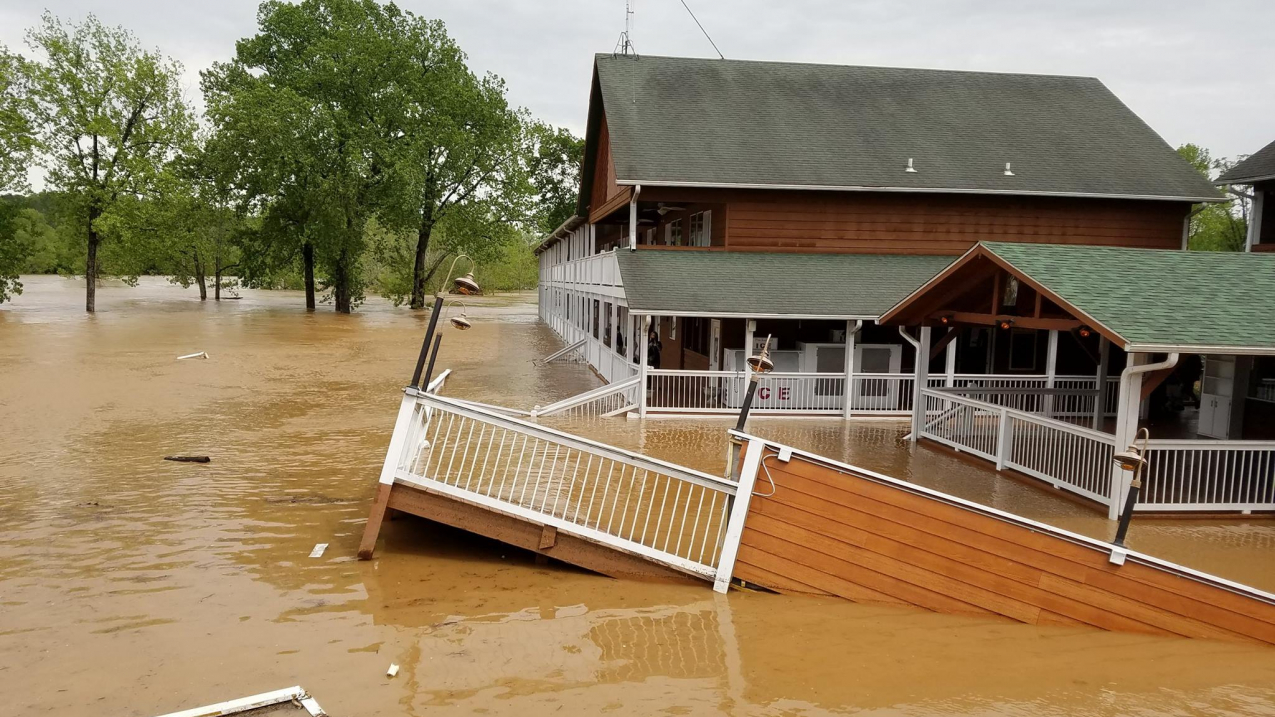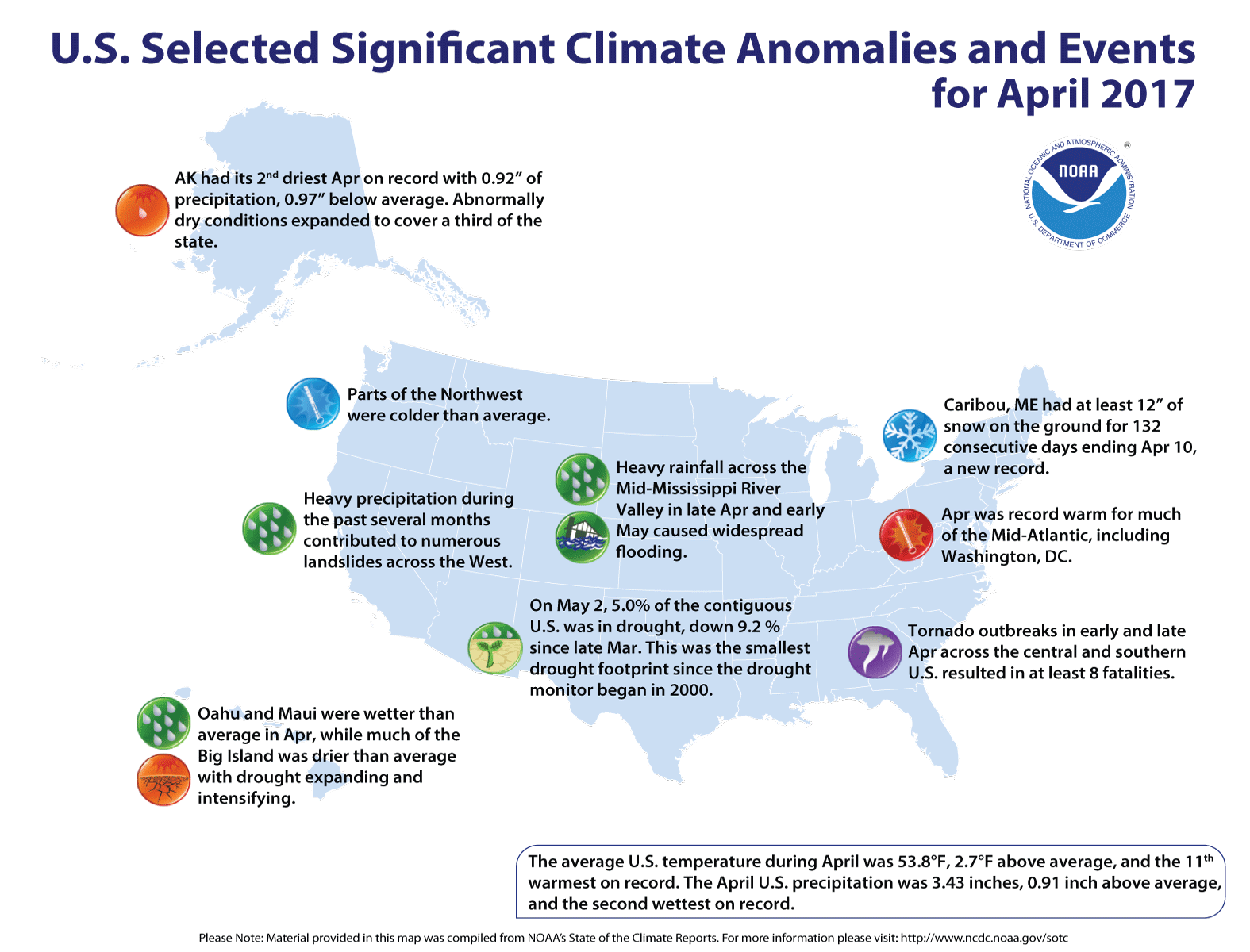National drought recedes to record-low level

A powerful storm system brought torrential rainfall and historic flooding to the Missouri Ozarks and southeastern Kansas from Friday night, April 28 through Sunday, April 30. Storm total rainfall amounts generally ranged from 4 to 8 inches with some areas of far southern and south central Missouri receiving from 10 to around 12 inches. This incredible rainfall resulted in widespread and historic flooding. Numerous roads, bridges and buildings were destroyed. Many roads were flooded through the event including state highways and Interstate 44. Several rivers reached major and historic levels, notably the Current River in the city of Van Buren (pictured). Photo posted online May 1 by @MOConservation. (Image credit: Missouri Department of Conservation)





